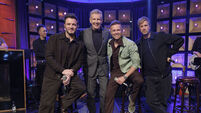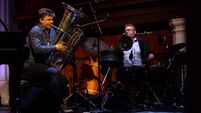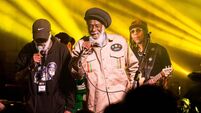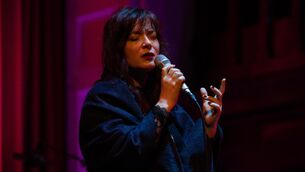Book Review: Painting a history of artists on Achill Island
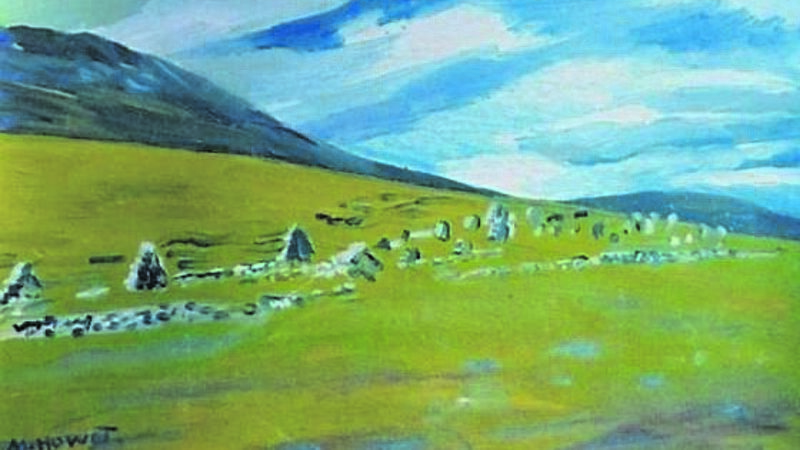
Achill Painters: An Island Story 1 Marie Howet's 1963 painting of the Deserted Village (Private Collection)
- Achill Painters: An Island History
- Mary J Murphy
- Knockma Publishing, €20
IT is a truism that northern Europe with its generally murkier light and conditions that can sometimes lead people to despair has produced the great writers of our epoch: Shakespeare; Joyce; Goethe. Southern Europe, by contrast, with its celestial light and conditions given to wellbeing, produces the painters: Da Vinci, Raphael, Caravaggio. There are many exceptions (the northern Renaissance for instance) of course, but in broad brush strokes the claim is true. Southern Europe, lest we forget, has its writers too: notably Homer, Kazantzakis, Calvino.
In Ireland, Achill Island is the exception that proves the rule to this theory that grounds art in geography. Mary J Murphy in Achill Painters: An Island History presents a riveting account of the astonishing array of artists who made Achill their home or who chose the island as their subject matter in the last couple of centuries.
Of the at least 200 painters Murphy has identified as having worked on Achill prominent among them were the Belgian Marie Howet, American Robert Henri, Mainie Jellett, Alexander Williams, Emilly Weddall and the contemporary Camille Souter.
Howet won praise from no less a figure than Henri Matisse: “I retrieved in spirit the deep resonance of your paintings as well as the nobility of your figures,” he wrote of the precocious young talent. And in in an exhibition of hers in Antwerp in 1929 chiefly comprising works depicting Achill and Donegal a critic wrote ”superb sense of composition, their dramatic and forceful nature, the fierce sincerity endemic to there work and the impression that her work is carried out under intense emotion”.
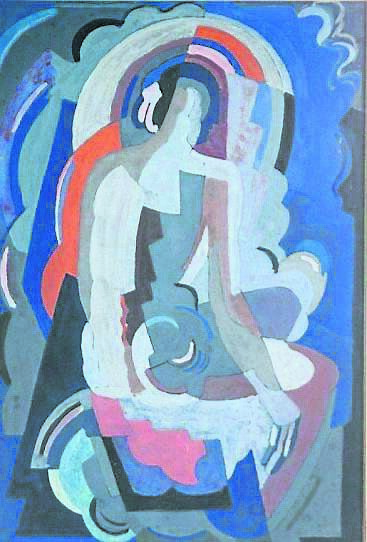
As Murphy writes, artists attract artists, and word got out that there was something special about Achill. In the foreword she describes a “fiercely proud and independent island” barely attached “by the flimsiest of threads to the jagged edge of Ireland “and likes it just fine that way”.
At the centre of what constituted a ‘school’ was the force of nature, Eva O’Flaherty. The one-time Parisienne model, who later reinvented herself as a suave businesswoman and developer of the knitting industry on the island, was the epicentre for the lives of the artists on Achill. Her cottage was the focal point for evenings of artistic discourse, for dinners, and for kind words of encouragement that every artist needs. It was as a salon to which artists gravitated. And it was not just artists who were drawn to this Peggy Guggenheim-like figure: writers, politicians and intellectuals of all shades were her friends. She was a founding member of Cumann na mBan in between her artistic proclivities. de Valera visited her. Revolutionary and writer Ernie O’Malley was a friend. In the late 1940s Sean MacBride was a visitor to O’Flaherty’s house at the time of the establishment of Clann na Poblachta.
Derek Hill (better known for his time on Tory Island and the school he inspired there) painted Flaherty in 1947 and captured her cerebral, compassionate nature to perfection.
Writers too were lured by the mysteries of the Achill Island. Naturalist Robert Lloyd Praeger wrote ‘’t has a strange charm which everyone feels but no one can explain’. Novelist Graham Greene rented a house for a time there too as did the novelist (the German Flann O’Brien) Heinrich Boll. Greene’s novel The Heart of the Matter was part-written in the village of Dooagh, an achievement which was duly rewarded by the Irish state banning it.
In what could be considered a school of painting along the lines of the St Ives school of painting in Cornwall in the mid-20th century, the Achill ‘school’, though not ever defined as such, attracted some of the luminaries of Irish and international painting.
The styles were impressionist, fauvist, cubist, expressionist, abstract and in later years mixed media. Subject matter were: the brooding cliffs of Minaun or Croaghaun; the unfathomable ocean; animals and of course, the people. A postman wheeling his bike past whitewashed cottages, portraits, or Achill bogwood sculptor Liam Kelly by Elaine Rody.
It is the landscapes though that prove the most captivating of all the paintings as depicted in this book: the astonishing shades of Carina Scott’s nightscape, Howett’s pastoral elegies, Alexandra van Tuyll’s heart-rending deserted village, and many others. Murphy writes of the inspiration of water in the numerous paintings that “it must be those atavistic, primal and visceral properties of water that have drawn painters to Achill like moths to the lantern”. She muses “what painter would not strain to capture those deeply transportive, dangerously alluring elements”.
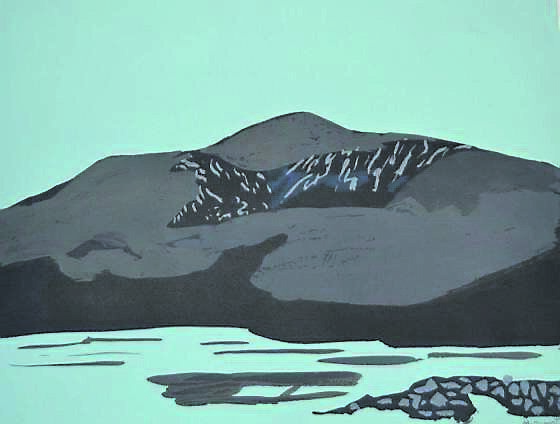
Best known among the artists was the ethereal Paul Henry whose realistic landscapes rendered Connemara as a dream-like antidote to the city clogged and filthy and miserable. Henry’s paintings have a breezy immediacy which almost make the viewer feel that they themselves are situated in person in scenes of russet bogland and whitewashed cottage.
Not included in the ‘school’ was Jack B Yeats, brother of William Butler, though he did visit Achill and was friends with several of the painters, he did not, so far as is known as Murphy writes, commit his interpretation of the Achill landscape to canvas.
In this fabulous record of the lives’ of the artists on Achill Island Murphy demonstrates herself as an acute art critic, biographer, genealogist, and social historian.
And what attracted the painters to Achill? In addition to the quality of light, the fact that it was a place in extremis, a borderland between land and ocean, appealed to the sensibilities’ of the artists who could capture something of the mercurial nature of the place. Some were inspired to render into art the extreme poverty that they witnessed, to record in paint what there eyes beheld.
The powerhouse of Irish art seemed to be generated from O’Flaherty’s house and in 1943 a group of them set up the Irish Exhibition of Living Arts in Dublin including Henry, Jellet, Evie Hone, Emily Grace, Mitchel Henry, Louis le Brocquy and Norah McGuinness. Closely affiliated to the White Stag Group, would its bold statement on what constituted Irish art at the time even have been possible without Eva O’Flaherty?
There were artists before and after O’Flaherty too of course but the impact she had on those that knew her resulted in a profound mark in the course of Irish art.
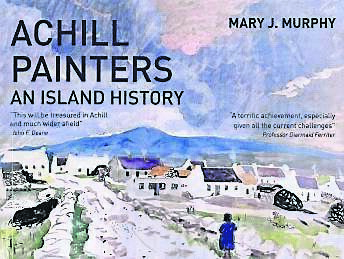
The success of the artistic enterprise depended on a welcoming population and Achill had that too in spades. Many of the artists developing lifelong friendships with the islanders. Murphy writes that islander John ‘Twin’ McNamara knew many of the artists and that he describes O’Flaherty’s hearth “as an ‘tobar, the well, the source”.
The chapters in this more than capable compendium have a standalone feel to them so that the occasional repetition arises. We are told a few times that there are few paintings of the shark fishing industry that thrived on Achill in the 1950s, and of the origin of the name Howett. However, these overlapping references tend to add layers of meaning, an enmeshed form that adds depth and texture to the work.
If ethereal light is the catalyst for painting, and dark, wintry nights the source behind brilliant writing, then Mary J Murphy in this book has captured both arts sublimely.

